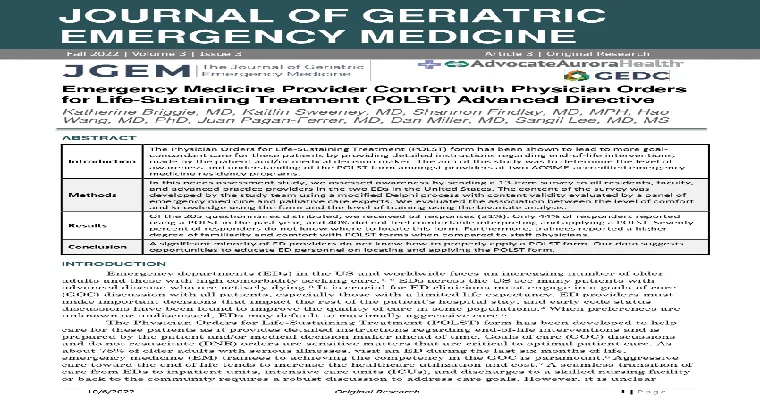In the realm of "POLST programs", understanding the distinction between "Endorsed" and "Mature" is crucial for healthcare providers and patients alike. POLST, which stands for "Physician Orders for Life-Sustaining Treatment", is a medical order that helps patients communicate their preferences regarding medical treatment in emergencies. This article delves into the differences between "Endorsed" and "Mature" POLST programs, highlighting their significance in improving patient care and honoring individual wishes.
What is a POLST Program?
Before diving into the comparison, it's important to understand what a POLST program entails. POLST is designed for patients with serious illnesses or frailty, ensuring their treatment preferences are respected. The program facilitates conversations between patients, families, and healthcare providers, allowing for clear documentation of the patient's wishes regarding resuscitation, hospitalization, and other critical medical interventions.
Understanding "Endorsed" POLST Programs
"Endorsed" POLST programs refer to those that have received formal approval from a recognized authority or organization. These programs typically follow established guidelines and protocols, ensuring that they are implemented consistently across various healthcare settings. Endorsed programs often provide training and resources for healthcare providers, promoting a standardized approach to patient care.
One of the key benefits of "Endorsed POLST programs" is their ability to enhance communication among healthcare providers. By adhering to a recognized framework, these programs help ensure that patient preferences are accurately documented and accessible during critical moments. This can lead to more coordinated care and better alignment with the patient's wishes.
Exploring "Mature" POLST Programs
On the other hand, "Mature" POLST programs have evolved over time and are typically characterized by a robust infrastructure and widespread implementation. These programs have undergone extensive testing and refinement, reflecting best practices and lessons learned from real-world applications. Mature programs often integrate feedback from patients, families, and healthcare providers, leading to continuous improvement in their processes.
A significant advantage of "Mature POLST programs" is their ability to adapt to changing healthcare landscapes and patient needs. These programs are not only comprehensive in their approach but also flexible enough to accommodate various patient populations and healthcare settings. This adaptability ensures that patients receive care that is not only aligned with their wishes but also responsive to evolving medical standards.
Key Differences Between Endorsed and Mature POLST Programs
The main differences between "Endorsed" and "Mature" POLST programs can be summarized as follows:
1. "Approval and Standardization": Endorsed programs are officially recognized and standardized, while mature programs may have evolved beyond initial guidelines to incorporate more diverse practices.
2. "Implementation": Endorsed programs often focus on establishing a baseline for implementation, whereas mature programs have typically been tested and refined through practical application.
3. "Adaptability": Mature programs are generally more adaptable to changing healthcare needs, while endorsed programs may be more rigid in their adherence to established guidelines.
Conclusion
In conclusion, both "Endorsed" and "Mature" POLST programs play vital roles in ensuring that patient preferences are honored in critical healthcare situations. Understanding the differences between these two types of programs can empower healthcare providers and patients to make informed decisions about their care. By fostering effective communication and respecting individual wishes, both endorsed and mature POLST programs contribute significantly to enhancing the quality of patient care in today’s complex healthcare environment.





